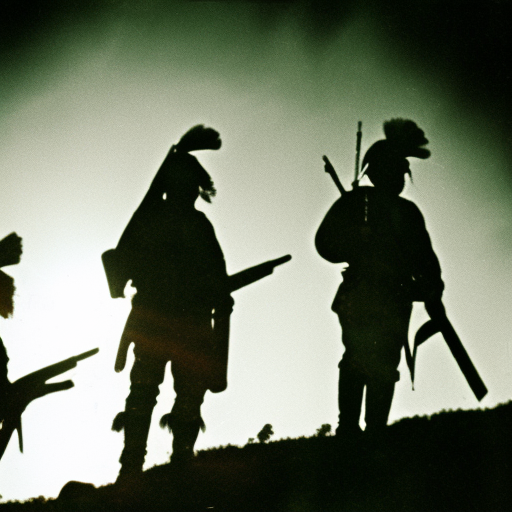American Indian Wars
The American Indian Wars were a series of conflicts between Native American tribes and the United States government from the late 18th century to the late 19th century. These conflicts arose due to a variety of factors, including territorial disputes, cultural differences, and the expansion of American settlers into Native American lands. The wars resulted in the displacement and decimation of many Native American tribes and the eventual confinement of survivors to reservations.
Background:
The conflicts between Native American tribes and European settlers began with the arrival of the first colonists in North America. As European settlements expanded, tensions grew as Native Americans were pushed off their ancestral lands and their way of life was threatened. The American Revolution further complicated these relationships, as various tribes allied with either the British or the American colonists.
Early Conflicts:
The first major conflict between Native Americans and the United States was the Northwest Indian War (1785-1795). The tribes of the Northwest Territory, led by the Shawnee chief Tecumseh and his brother Tenskwatawa (known as “The Prophet”), fought against American expansion into their lands. The war ended with the Treaty of Greenville, which forced the tribes to cede large portions of their territory to the United States.
Indian Removal Act:
In the early 19th century, the United States government implemented a policy of Indian removal, aiming to relocate Native American tribes to lands west of the Mississippi River. This policy led to the forced removal of thousands of Native Americans from their ancestral lands, most notably the Trail of Tears, which resulted in the deaths of thousands of Cherokee people.
Black Hawk War:
The Black Hawk War (1832) was fought between the United States and the Sauk and Fox tribes in present-day Illinois and Wisconsin. The tribes, led by Chief Black Hawk, resisted removal from their lands. The conflict ended with the defeat of the Native Americans and their forced removal to Iowa.
Indian Wars in the West:
As American settlers moved westward, conflicts with Native American tribes escalated. The United States government sought to control and subdue tribes in the Great Plains and the Southwest. The most significant conflicts during this period include the Sioux Wars (1854-1890), the Apache Wars (1849-1886), and the Nez Perce War (1877).
Wounded Knee Massacre:
The Wounded Knee Massacre (1890) marked the end of the major military conflicts between Native American tribes and the United States government. It occurred when the U.S. Army attempted to disarm the Lakota Sioux at Wounded Knee Creek in South Dakota. The confrontation turned violent, resulting in the deaths of approximately 250 Native Americans, including women and children.
Consequences:
The American Indian Wars had devastating consequences for Native American tribes. Many tribes were forcibly removed from their ancestral lands and relocated to reservations, often far from their traditional territories. The wars also resulted in the loss of Native American lives and the destruction of their cultures and ways of life.
Legacy:
The American Indian Wars continue to have a lasting impact on Native American communities. The conflicts and their aftermath have contributed to ongoing social, economic, and political challenges faced by Native Americans, including poverty, unemployment, and limited access to education and healthcare. Efforts to address historical injustices and improve the lives of Native Americans are ongoing, but the scars of the American Indian Wars still remain.












